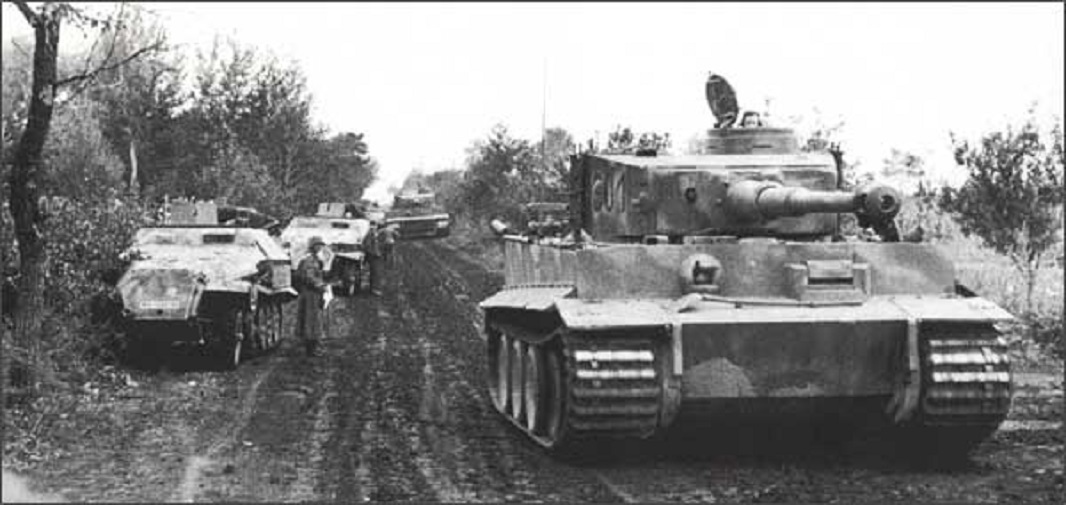Tigers of the Grossdeutschland division’s 10th company pass by SdKfz 251 halftracks. The Panzer Grenadier Division Großdeutschland (also commonly referred to simply as Großdeutschland or Großdeutschland Division) was an elite combat unit of the German Army (Heer) that fought on the Eastern Front in World War II. Großdeutschland was one of the best-equipped units of the German Army.
Footage of German Heavy Panzerkampfwagen Tiger I firing 88mm gun (I believe that this is the real sound of the mighty “eighty-eight”)
The 88mm was a cumbersome weapon, needing to be towed and deployed in order to be readied for action. As it was, the Tiger I was the first tank to mount the 88mm gun in a fully traversable turret. Krupp designed the turret to mount the KwK 36 L/56 88mm anti-tank gun. The designation KwK 36 and L/56 simply implied the model number year 36 and the barrel length of 56 calibers. Depending on the type of ammunition used, the Tiger’s 88mm has a muzzle velocity of 930m per second and could penetrate up to 110mm of armor at a distance of 2000 meters. For comparison’s sake, the T-34’s armor was 90mm at its thickest and this was only on the late T-34 models which possessed armor upgrades. Since the flight time of an armor piercing round at a range of 2000m is about 2.1 seconds, accuracy and correction of fire against moving targets is more important than with older anti tank guns. This made it ideally suited to open terrain where it could engage enemy tanks at long range before the opponent’s weapons were even in range.
The 13.(Tiger) Kompanie, of Panzer Regiment Großdeutschland, reported on the performance of the 88 mm KwK 36 L/56, when their Tigers engaged the T-34: “First round hits were usually achieved at ranges between 800 to 1,000 meters. At these ranges, the Panzer Granate (they are referring to the PzGr. 39 APCBC ammunition) absolutely penetrated through the frontal armor, and usually still destroyed the engine at the rear of the T-34 tank. In 80 percent of the cases, shots from the same range hitting the side of the hull toward the rear of the tank resulted in the fuel tanks exploding. Even at ranges of 1,500 meters and longer, during favorable weather, it is possible to succeed in penetrating the T-34 with minimal expenditure of ammunition” (JENTZ, Thomas L.; Germany’s TIGER Tanks – Tiger I and II: Combat Tactics; op. cit.). Many more reports like this one attest to the precedent arguments on the superior performance of the 88 mm KwK 36 L/56 gun.
Posted by Tanks. Being tanks. on Thursday, April 20, 2017

